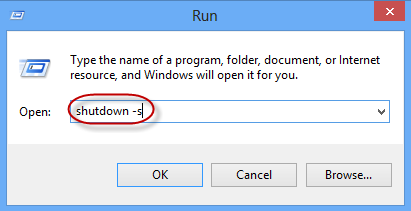
Each usually will run in its own process but not necessarily simultaneously. See Shared runtime.ĭepending on the host Office application and the features used in the add-in, there may be many runtimes in an add-in. However, for some Office host applications, the add-in manifest can be configured so that any two, or all three, can run in the same runtime.
SHUT IN RUN TIME MAC
Task pane dialog function commandExcel custom functions(when the runtime is shared or the add-in is running in Office on the web) Outlook event-based task(when the add-in is running in Outlook on Mac or Outlook on the web) Type of runtimeĮxcel custom functions(except when the runtime is shared or the add-in is running in Office on the web) Outlook event-based task(only when the add-in is running in Outlook on Windows) The following table shows which possible features of an add-in use each type of runtime. Browser runtime: Includes all the features of a JavaScript-only runtime and adds support for local storage, a rendering engine that renders HTML, and cookies.ĭetails about these types are later in this article at JavaScript-only runtime and Browser runtime.It doesn't support local storage or cookies.
SHUT IN RUN TIME FULL
JavaScript-only runtime: A JavaScript engine supplemented with support for WebSockets, Full CORS (Cross-Origin Resource Sharing), and client-side storage of data.


There are two types of runtimes used by Office Add-ins: Node.js and modern browsers are examples of such runtimes. As an interpreted language, JavaScript must run in a JavaScript runtime. Office Add-ins execute in runtimes embedded in Office.


 0 kommentar(er)
0 kommentar(er)
